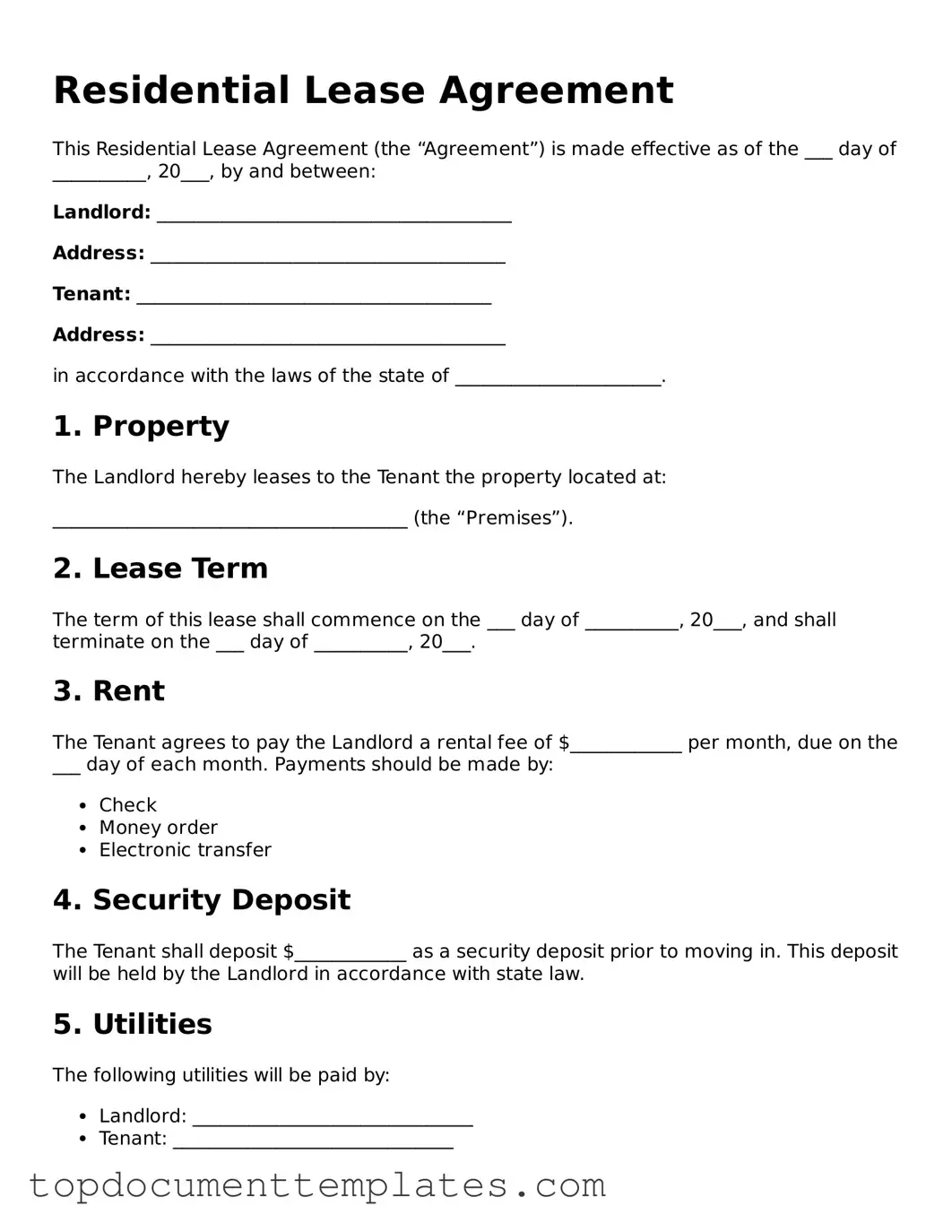Official Lease Agreement Template
A Lease Agreement is a legally binding contract between a landlord and a tenant, outlining the terms and conditions for renting a property. This document serves to protect the rights of both parties and ensures clarity in the rental relationship. To get started with your own Lease Agreement, fill out the form by clicking the button below.
Open This Form
